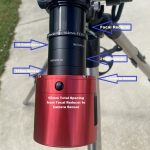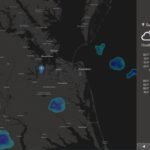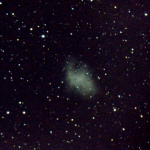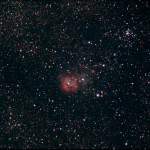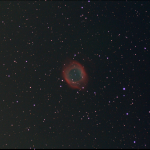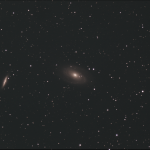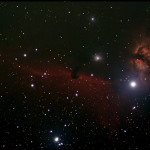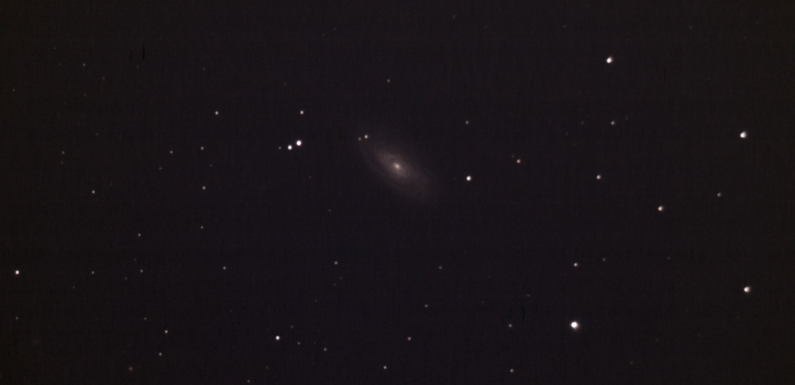
It was suppose to be cloudy. The weather reports said it would clear up around midnight, but at 7:30 PM it looked like it might be pretty clear so I decided to set up. I am glad I did! Nice clear night with temperatures in the upper 40s. My gear was working great. A great EAA session and I captured 9 more objects for my Messier Log.
I decided to try to add a little more spacing between the camera and the focal reducer. I am using a T-Adapter which is 50 mm, a 16.5 mm spacer, and a 21 mm spacer. With the 17.5 mm spacing from the camera body to the sensor this should be 105 mm of spacing between the F/6.3 Focal Reducer and the camera. Plate solving is reporting my F ratio at F/6.9 (focal length of 1054mm). I was hoping it would be closer to F/6.3 after changing my spacing but that will work.
I did a visual polar alignment using the polar scope. Then focused using the Ekos focus module. After getting focus I shot a new set of flats since I changed the spacing for the camera. I used Ekos to capture the flats targeting an ADU of 25,000. Once I had the flats captured I averaged them in SharpCap Pro using the Folder Monitor Camera and the Capture Flats tool. Having the display on the Raspberry Pi is really handy for doing the work at the scope, makes setup a lot easier and quicker.
All these EAA images were capture with my ZWO ASI294MC Pro with a SVBONY UV/IR Cut Filter through my Celestron C6 6″ SCT with a F/6.3 focal reducer and live stacked using SharpCap Pro. The mount and cameras are remotely controlled with KStars/Ekos/INDI running on an Astroberry Raspberry Pi. The images have been resized and cropped for size but otherwise appear just as I observed them.
M82, the Cigar Galaxy, in the constellation Ursa Major. This is a live stack of 100 x 8 second exposures at 121 gain.
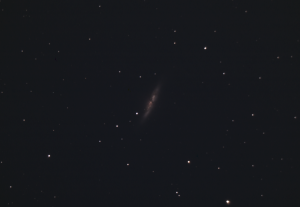
M82 was my test object to make sure everything was working. It came out great I think.
M86 an elliptical galaxy in the constellation Virgo. This is a live stack of 100 x 8 second exposures at 121 gain.
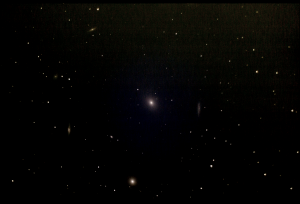
There are a lot of interesting galaxies in this FOV. M84 is towards the bottom of the frame. NGC 4402, NGC 4425, NGC 4407, NGC 4388, and NGC 4387 are all easily resolvable.
Here is the live stack of M86 with the SharpCap Deep Sky Annotation.
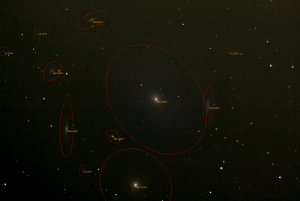
M84 is also an elliptical galaxy in the constellation Virgo. This is a live stack of 100 x 8 second exposures at 121 gain.
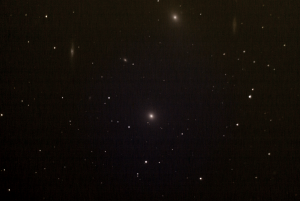
M86 and friends are toward the top of the frame.
M87 is an elliptical galaxy in the constellation Virgo. This is a live stack of 100 x 8 second exposures at 121 gain.
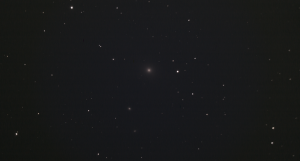
NGC 4478 and NGC 4476 are below M87. NCC 4486A is to the left and NCG4486B is down and to the right from M87. There is an interesting double star, IC3463, near the top center of the frame.
M88 is a spiral galaxy in the constellation Coma Berenices. This is a live stack of 100 x 8 second exposures at 121 gain.
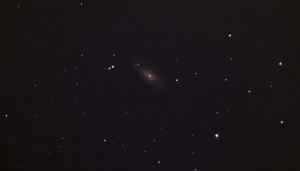
This EAA capture of M88 is my favorite from the night. I can really resolve some nice detail in the spiral arms.
M89 is an elliptical galaxy in the constellation Virgo. This is a live stack of 100 x 8 second exposures at 121 gain.
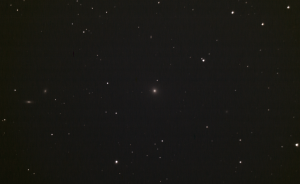
NGC 4550 and NGC 4551 are visible in the left of the frame.
M90 is an intermediate spiral galaxy in the constellation Virgo. This is a live stack of 100 x 8 second exposures at 121 gain.
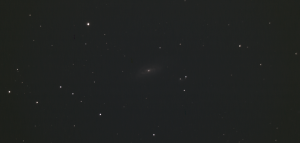
I can just resolve the inner ring.
M85 is an elliptical galaxy in the Coma Berenices. This is a live stack of 100 x 8 second exposures at 121 gain.
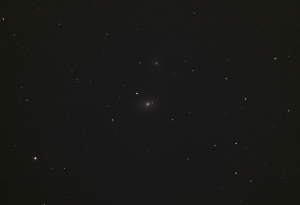
NGC 4394 is also visible up and slightly right from M85.
M102 or NGC 5866 is a galaxy in the constellation Draco. This is a live stack of 100 x 8 second exposures at 121 gain.
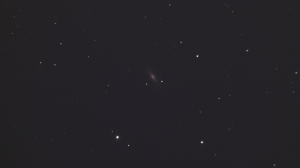
M102 is another favorite of the night. The dust lane running through the center of the disc can be resolved.
M60 is an elliptical galaxy in the constellation of Virgo. This is a live stack of 100 x 8 second exposures at 121 gain.
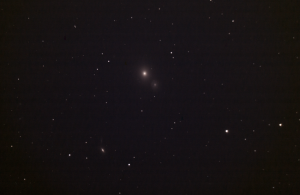
NGC 4647 is the spiral galaxy just down and to the right from M60. NGC 4638 is further down and just to the left.
I packed things in at around 12:45 AM. I could have probably captured a few more but I was tired at it was time to call it. Over all a great night and some more Messier objects for the log.


